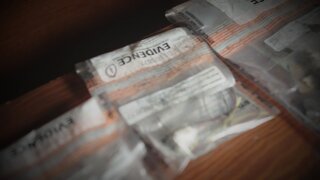Create a free profile to get unlimited access to exclusive videos, breaking news, sweepstakes, and more!
How Did Successful Document Forger Mark Hofmann Rationalize Bombing People To Death?
Successful document forger Mark Hofmann believed that murder was the only way to divert attention from investors suspicious of the inauthentic historical documents he had been selling for thousands of dollars.

One of the most accomplished forgers in history bombed two Salt Lake City civilians on the morning of Oct. 15, 1985. Mark Hofmann, 30 at the time, implanted homemade pipe bombs filled with nails in packages that were picked up and triggered by two unsuspecting victims less than two hours apart.
Hofmann had been making tens of thousands of dollars selling fraudulent historical documents to the Church of Jesus Christ of Latter-day Saints in the early 1980s. He even got close to making a $1.5 million deal with the Library of Congress for a forgery of the Oath of a Freeman, an American historical document dating back to the 1630s, according to the Los Angeles Times.
So why did Mark Hofmann commit murder?
Because he was $1 million in debt and his lies were catching up to him, according to those familiar with the case. In Oxygen’s “A Lie to Die For,” experts interviewed revealed the pressures of time and money that ultimately led to Hofmann’s explosive decision.
“He needed more and more money, because Mark Hofmann was a spendthrift,” Latter-day Saints Historian Richard E. Turley told Oxygen. “Mark Hofmann got over his head financially, and when he got over his head, he wanted to buy time.”
Hofmann made more than $1 million in total sales from his fakes, forging more than 85 people’s signatures. Hofmann was selling false documents for several thousand dollars apiece, including the highly controversial document, “The Salamander Letter,” for $40,000. He was spending just as much as he was making, however. Hofmann was enjoying a lavish lifestyle, having bought a luxury sports car, several authentic first-edition books and other personal expenses. According to the Deseret News, he additionally made a down payment of $180,000 on a new home.
In the months prior to the murders, people were starting to question the authenticity of Hoffman’s forgeries. Steven Christensen, a supplier of historical documents to the LDS Church and the man Hofmann sold the “Salamander Letter” to, was going to check if the letter was legitimate. Other investors were looking into Hofmann’s purported Mormon documents, and the Library of Congress was holding back on their initial interest in the “Oath.” Hofmann, in his mind, needed to take “drastic measures” in order to keep his grift going.
The Deseret News reported that, in 1988, three years after the murder and two years after his conviction, Hofmann wrote a four-page letter to the Utah Board of Pardons and Parole. In the letter, which he titled “A Summary of My Crimes,” he explained why murders — what he called “drastic measures — were his only way out of the hole he had dug for himself.
“I told myself that my survival and that of my family was the most important thing,” Hofmann wrote in the letter. “That my victims might die that day in a car accident or from a heart attack anyway.”
According to Hofmann’s letter, nothing was worse than being labeled a fraud. He had been excelling in forgery since he was a teenager, impressing his friends with his ability to copy signatures of old church leaders. He was also said to have fooled coin dealers and collectors into thinking he had authentic rare coins.
“I felt like I would rather take human life — or even my own life — rather than to be exposed,” he said.”
This sentiment seemed to hold true, because, not only did Hofmann murder Christensen and Kathy Sheets, the wife of a businessman who had been working closely with Christensen in an investment business, he also tried to kill himself the following morning, according to his letter to the parole board, as reported in the Deseret News. He built a third bomb intended for himself and the bomb went off in his car.
Hofmann, although badly injured from the explosion, survived, and faced 28 criminal charges, including two counts of capital murder. He now lives as what he feared most: A fraud. Hofmann was sentenced to five years to life in prison with no chance of parole, and his reputation went from an unassuming scholarly historian and impressive document collector among his family and church to a convicted liar and murderer.
Curious about how Hofmann was able to deceive everyone from church leaders to investigators to his own wife? Watch “A Lie to Die For,” which premiered Sunday, June 23 on Oxygen.














